I took advantage of a holiday to spend four days in Berlin. The weather was not the greatest, but I missed worst weather in Belgium, so I should be thankful; in general, the little rain I did have did not affect what I wanted to do.
My hotel was right on Gendarmemarkt, a square in what used to be East Berlin, but much developed since 1990. There are two identical churches on the square and this is the French Huguenot’s Church during a rare bit of sunshine.
My first stop was Brandenburg Gate, from the East Side. I had seen it in picture so much that I could not wait to see the real thing. There is a very similar gate in Brussels, built in 1880 for the 50th anniversary of Belgian Independence. The Brandenburg Gate is older, but a lot smaller – I was almost disappointed when I realised that the space between the columns is not really big enough for a car – except for the center span. The Gate in Brussels is probably 30-40% larger than this one, but it certainly does not hold the same symbolic importance…
The view from the West Side has a little better light, but fewer people. And you only see the back of Athena. To get where I took this picture, I had to cross the ‘trace’ of the wall, for the first, bit certainly not the last time. With it gone, it is almost impossible to imagine what the city was like when it was separated by that ribbon of concrete forms.
Now, there is just a trace on the pavement that tells you where the wall was. I am straddling the line where the old wall to take this picture. The wall’s location is indicated by the two rows of cobble stones heading away. 20 years ago – only 20 years ago – this picture would have been impossible and 21 years ago, this would have been very very dangerous!
Not far from Brandenburg Gate is the Memorial to the Murdered European Jews, an ensemble of 2711 upward boxes aligned in a square. From the outside, it looks plain and mundane. I had the impression that there were not many visitors at all.
However, even though from the top, all the ‘boxes’ look like they have the same low height, the passages in between them actually dips so that you can get lost in the middle. Once towards the center of the square, it is not hard to get disoriented as everything looks the same.
On my way back to the hotel, I passed by the Telecommunication Museum, with a very interesting decoration on the roof. Everywhere you look, there is something interesting in this town …
On Friday, I continues to explore Berlin. I started at Potsdam Square and saw there my first pieces of the wall. There are only six sections left, but they are right where they were historically and show how the square was actually separated between East and West Berlin. A little further, the trace of the wall goes right through a building – I suppose that this is a new building, but it certainly did not look like it was built in the last 20 years. It may have been right at the edge of the wall.
Under the square, there is a huge train/subway station which I did notexplore. On top, there are preparation for the Christmas Market (one of many I saw being built in Berlin) which will be here in a few weeks. This one has an Austrian theme, complete with a chalet that would fit better in the Austrian Alps than here in the middle of the city.
A little further along, I saw the new Theatre and Concert Hall. When I saw this Piano truck parked in front of the concert hall, I immediately imagined the frantic phones calls that led to this: “What do you mean the Fat Lady sat on the Grand Piano? She is not supposed to do that and now she broke a leg? What are we going to do tonight? Call “Pianos-R-us” and see if they have something to help us out!”
Near the theatre is the new Sony Center. I was not quite sure what it was supposed to be (there are some shopsthere, and many restaurants, and a museum with an old movie camera and an extremely long lens …) but I was intrigued by the roof. The structure is similar to a bicycle wheel, or the design of the latest FerrisWheels in London and Singapore, with a hard rim and soft spokes that hold everything in place. However, this is horizontal and not vertical – therefore the key is the center piece that just like an umbrella keeps the whole structure from collapsing onto itself.
On the way bask to the Tiergarten, I ran into an area where the representatives of all the Lander (the various regions that make up Germany) have their offices. The building housing the Hesse delegation is quite avant-garde!
A puddle from recent rain, fallen leaves and bare branches in the background – instant artistic shot!
Back near the Brandenburg gate, there are many people trying to make a buck from the many tourists who flock there. I saw an ‘East German’ soldier, an ‘American Indian’ in full regalia, several GIs, a Russian Bear (complete with Soviet flag) and this statue-man who had the full attention of a class on a field trip…
On the way to the Reichstag, I stopped at one of the many “Wall Memorial” that are throughout the city. This one simply lists all the people who were killed trying to cross the wall. There were only 10 names listed – the first one was in 1961; the last, in early 1989, only months before the wall became obsolete!
The Reichstag has been renovated since the capital moved back to Berlin and new offices have been build behind it for the members of parliament and their staff. The modern building is quite a contrast to the classical architecture of the Reichstag.
There is a long line of people trying to get in for a visit, so I skipped and kept on exploring the city. Not far from the Reichstag is my first view of the Spree River and just on the other side is the very modern Berlin Hauptbahnhof, or main train station.
It is amazing what you run into this city … this little beauty caught my eye. The Bugatti Veyron, fastest road legal car in the world, with a V16 engine (actually two V8s side-by-side) and over 1000 hp. For some reason, they did not indicate the average consumption either in the city or on the highway… No test drives allowed either.
Further down Friedrichstrasse, I came to another icon on the Cold War: Checkpoint Charlie. I approached it from the East German side, so the sign indicating, reassuringly, that I was entering the American Sector – however, it does seem threatening about weapons … and what is immediately into the American Sector: McDonald’s!
The guard post is a copy – the original, essentially the same little wooden shack, is in a museum not far. From the other side, the sign is just as I remember it in countless news photos and news reports. The buildings are certainly new but the watching Soviet Soldier does give the whole scene a very eerie feeling.
Back towards Unter den Linden, one of the main shopping streets (now and before the war – it was in East Berlin during the Cold War), I saw the library of Berlin University – also known as Humboldt Universitaet. A difficult shot because of the light coming from the sky. However, I am now using Lightroom (from Adobe) to process my photos and it allows quite a bit of adjustment to enhance a photo. In this particular case, the buildings were a bit too dark, but I was able to make them lighter without losing the definition of the clouds in the sky – I am still learning, but making progress…
In front of the main entrance to the old campus of the University, you are reminded that Berlin, and Germany in general, has been at the forefront of the scientific revolution and development in the last two centuries. However I was surprised at the very modern nature of the statue to Max Planck, but then remembered that he was a 20th century figure and the statue probably has not been there very long.
Not far from the University is the Neue Wache- not a very interesting name for not a very interesting building, from the outside. The inside is completely empty, with white washed walls totally devoid of any inscriptions. There is a glass cupola in the middle of the ceiling and under it is a single statue of a mother with her dead son – in honor of the war refugees everywhere. A very sobering place
Berlin is full of contrasts. Here you have the modern architecture of a museum designed by IM Pei with, in the background, the classical architecture of one of the many palaces in Berlin, now the Museum of German History.
Just a little further along, on the other side of the Spree, I found the Berliner Dom, or Berlin Cathedral. Not really my taste, I must admit.
I was more intrigued by the statues of Karl Marx and Friedrich Engels in a nearby park. They are in a very formal pose and look uncomfortable with their fame. I wonder if we should consider that the book they wrote, Das Kapital, is the most expensive book ever written?
On Saturday, I went to the suburbs in order to visit the largest of the royal palaces near Berlin: Schloss Charlottenburg. The Grande Orangerie is indeed large, but cannot be visited. It is only used for special occasions.
While the outside is not very ornate, inside there are a few very nice rooms. This is a hallway that leads to several reception rooms on the right.
Empress Sophie Charlotte had a passion for ceramics, especially the ones coming from China which we all the rage at that time. This room was build especially to display a part of her collection. With the mirrors, the room and collection look even bigger than they are. There is pottery everywhere!
Frederick the Great, Sophie Charlotte’s grand son, built an extension to the palace called Neuer Fluegel. It has the largest and most beautiful rooms in the palace, including this reception/dining/dance room with large windows on both sides. The gold leak decoration is different between each windows, with a lot of symbology, such as the four main elements of nature: earth, water, air and fire.
I went for a walk in the park. There is a mausoleum where members of the family are buried, but it was not open. There are the formal gardens in front of the palace, but more interesting views in the alleys on the side, less formally designed. With a small ray of sunshine, this would have been a lot better…
Nice bridge from where there is a good view of the gardens and palace. A lot of people come on the bridge to take photos of the palace – this girl was more interested in the reflections of the water I think as she is facing this way…
I had to include one view of the palace from the gardens..
On my way back to the hotel, I stopped near the longest stretch of preserved wall called the East Side Gallery where just over 1 km or the wall has been preserved. Just as I got out of the subway, it started raining harder than the rest of the day, so I did not spend too much time there. Here is a view of the East side of the wall along the Spree.
And this is the same section from the other side – it just seems appropriate against the stark emptiness on the Eastern side, that there just happens to be a stretch limo with all the graffiti on the Western side…
On Sunday morning, I went to see one of the flea markets in town. This is the one at Mauer Park – a lot of junk, but not many photo ops..
I had a nice stay but I do not feel like I know Berlin after only four days. I will have to come back and explore some more…
(1863 Page Views)


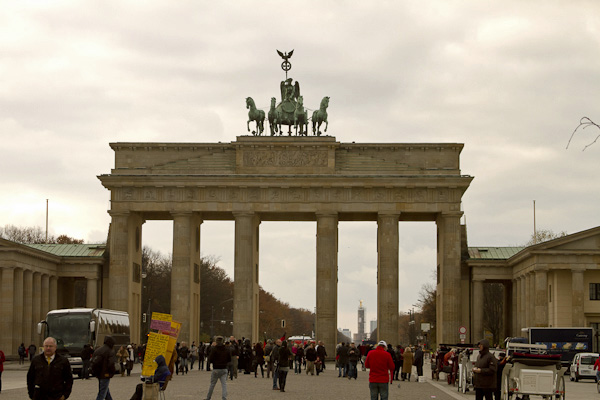


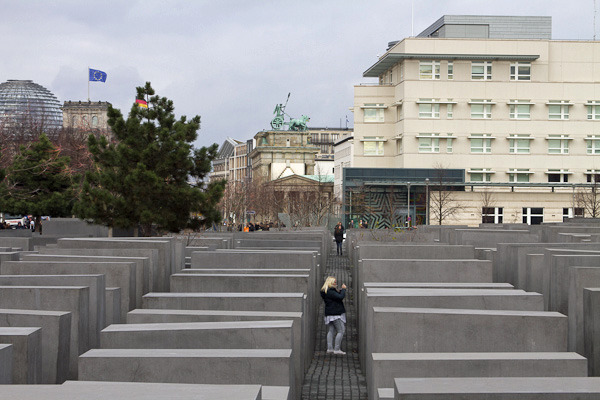

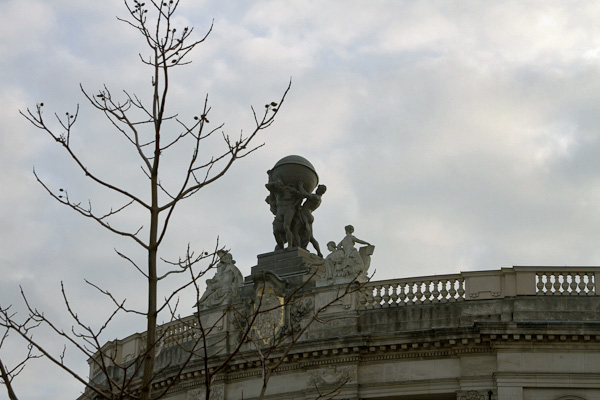




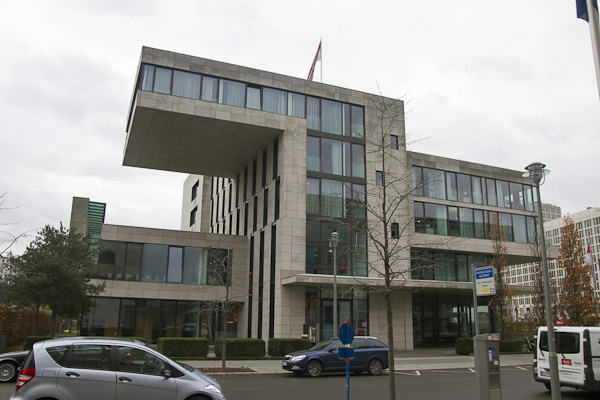



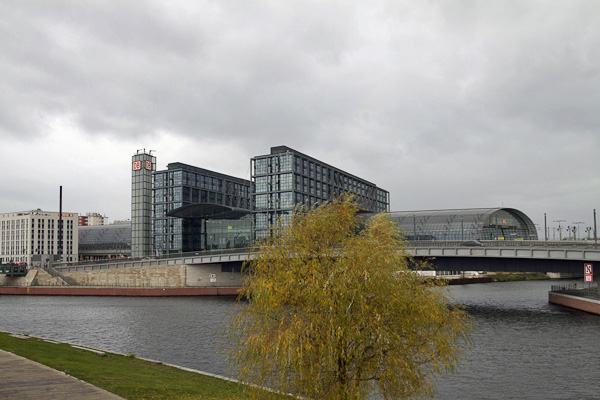
















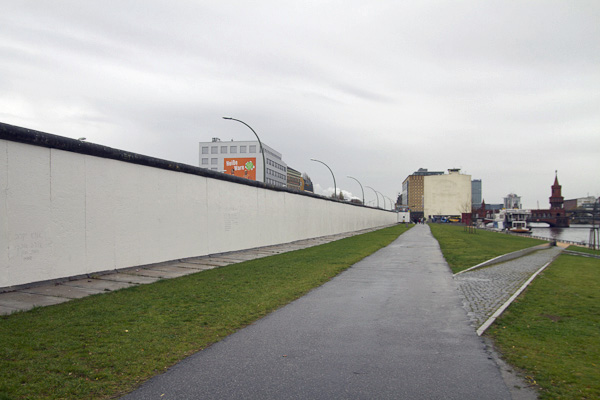


Pierre, I haven’t been to Berlin, so your photographs of the wall that is no longer there are really interesting. I hear that a lot of creativity has been released in the city, so maybe I’ll be lucky enough to visit sometime.